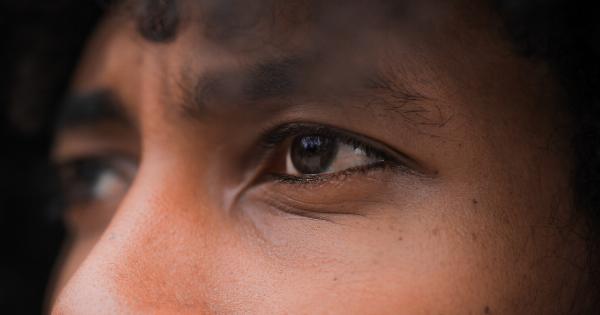Glaucoma is a sight-threatening condition that affects millions of people worldwide. It is caused by damage to the optic nerve, which connects the eye to the brain. The damage is often caused by increased pressure in the eye.
Glaucoma can be asymptomatic in the early stages, making it difficult to diagnose. However, there are various signs and symptoms of glaucoma that you can observe while watching TV. In this article, we will discuss how to spot signs of glaucoma while watching TV.
What is Glaucoma?
Glaucoma is a condition that damages the optic nerve, which is responsible for carrying visual information from the eye to the brain. The damage to the optic nerve is usually caused by increased pressure in the eye, also known as intraocular pressure.
If left untreated, glaucoma can lead to loss of vision and eventually blindness. Glaucoma is a progressive disease, which means it gets worse over time if not managed appropriately.
Types of Glaucoma
Glaucoma can be of different types, the most common of which is primary open-angle glaucoma. Other types of glaucoma include angle-closure glaucoma, normal-tension glaucoma, and congenital glaucoma.
All types of glaucoma can lead to vision loss or blindness if untreated.
Signs and Symptoms of Glaucoma
In the early stages, it can be challenging to detect glaucoma as there are often no symptoms or pain. However, the disease progressively causes peripheral vision loss, which is not easily noticeable.
As a result, many people with glaucoma do not realize they have it until significant visual impairment occurs. Other symptoms of glaucoma include:.
- Blurred vision
- Halos around lights
- Eye redness
- Headaches
- Nausea and vomiting
- Tunnel vision
It is essential to note that the symptoms of glaucoma can be similar to those of other eye conditions, so it is crucial to consult an eye doctor for proper diagnosis.
How to Spot Signs of Glaucoma While Watching TV
As mentioned earlier, glaucoma can be asymptomatic in the early stages, so it may be difficult to identify. However, you can watch out for these potential signs of glaucoma while watching TV:.
1. Difficulty Seeing in Low Light
If you struggle to see in low light conditions while watching TV, it could be a sign of glaucoma. The disease affects the optic nerve, which is responsible for sending signals to the brain that interpret what you see.
With glaucoma, the nerve becomes damaged, making it more difficult to see in low light conditions or at night.
2. Halos Around Lights
If you notice halos around lights while watching TV, it could be a sign of glaucoma. Halos can appear as a bright or colored ring around lights and can make it challenging to see clearly.
This symptom is caused by the buildup of pressure in the eye, which distorts the shape of the cornea and affects vision.
3. Blurred Vision
If you experience blurred vision while watching TV, it could be a sign of glaucoma. This symptom is caused by damage to the optic nerve, which affects the clarity of vision.
Blurred vision can also be caused by other eye conditions, so it is essential to consult an eye doctor if you experience this symptom.
4. Loss of Peripheral Vision
If you notice loss of peripheral vision while watching TV, it could be a sign of glaucoma. Peripheral vision loss is a common symptom of glaucoma and is caused by damage to the optic nerve.
This symptom is often not noticeable until the disease has progressed, so it is essential to have regular eye checkups to detect glaucoma early.
5. Eye Pain or Redness
If you experience eye pain or redness while watching TV, it could be a sign of glaucoma. These symptoms are caused by the increased pressure in the eye, which can cause discomfort and inflammation.
It is essential to consult an eye doctor if you experience these symptoms as they can be a sign of other eye conditions as well.
6. Headaches
If you experience headaches while watching TV, it could be a sign of glaucoma. Headaches can be caused by an increase in intraocular pressure resulting from glaucoma.
The pain may be localized around the eye or on the forehead and can be relieved using painkillers. However, the underlying cause should be treated to prevent further damage.
7. Nausea and Vomiting
If you experience nausea and vomiting while watching TV, it could be a sign of glaucoma. These symptoms are caused by an increase in intraocular pressure, which can affect the balance of fluids in the body.
It is essential to seek medical attention if you experience these symptoms as they can indicate other health conditions as well.
Preventing Glaucoma
Glaucoma is a progressive disease that can lead to vision loss and blindness if left untreated. However, there are several ways to prevent or slow down the progression of glaucoma:.
- Regular eye exams: Regular eye exams can help detect glaucoma early, allowing for prompt treatment.
- Manage underlying health conditions: Managing underlying health conditions such as diabetes and high blood pressure can reduce the risk of developing glaucoma.
- Lifestyle changes: Making lifestyle changes such as regular exercise, eating a healthy diet, and reducing alcohol consumption can reduce the risk of developing glaucoma.
- Medications: There are various medications for treating glaucoma, such as eye drops and oral medications. The medications work by reducing intraocular pressure, preventing further damage to the optic nerve.
- Surgery: In some cases, surgery may be necessary to treat glaucoma. The surgery aims to reduce intraocular pressure by improving the drainage of fluids from the eye.
Conclusion
Glaucoma is a sight-threatening condition that can lead to vision loss and blindness if left untreated. In the early stages, it can be challenging to detect as there are often no symptoms.
However, by watching out for potential signs of glaucoma while watching TV, you can detect the disease early, allowing for prompt treatment. It is essential to have regular eye exams and follow your doctor’s treatment plan to prevent the progression of glaucoma.




























